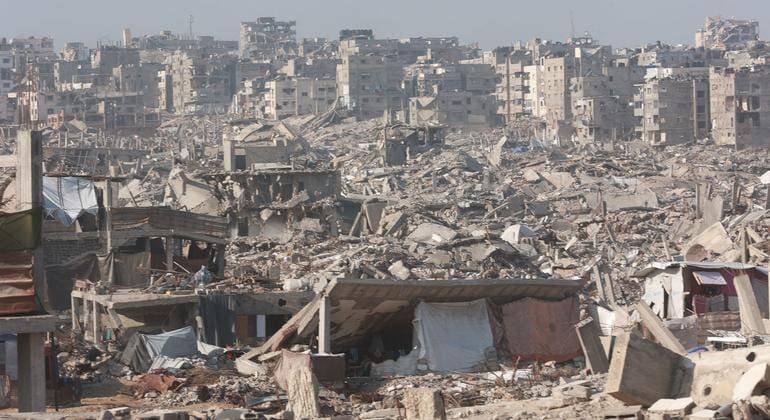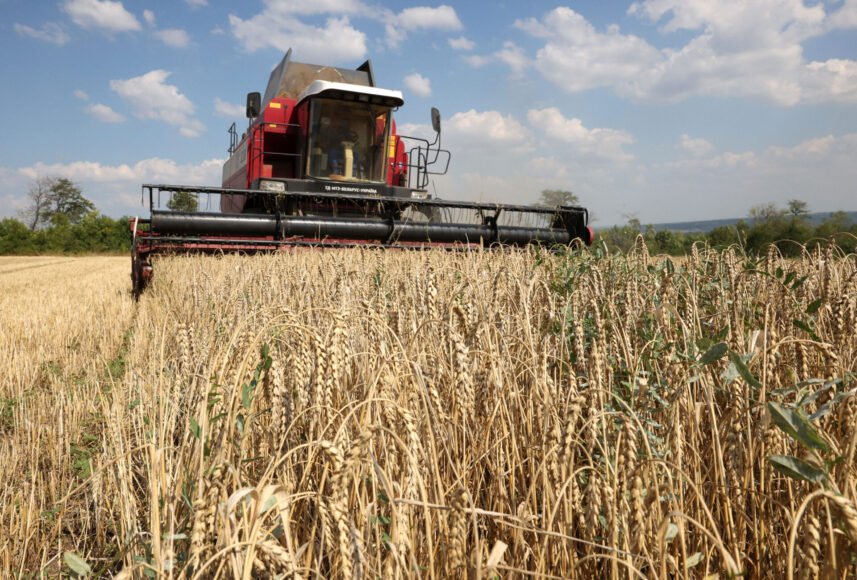
“A baby girl was reportedly killed in Khan Younis by an airstrike yesterday morning, while seven children were killed in Gaza City and the south the day before,” stated Ricardo Pires, spokesperson for the UN Children’s Fund, UNICEF.
Information Summary
- UNICEF reports 67 children killed during the ceasefire.
- 280 Palestinian deaths and 672 injuries noted since the pause started.
- Severe food shortages persist for families despite market activity.
- Collapse of Gaza’s health system leaves children without care.
- Approximately 4,000 children need urgent medical evacuation.
Mr. Pires updated journalists, saying: “Only one conflict party in Gaza possesses the firepower for airstrikes.”
Since 11 October, marking the first full day of the ceasefire between the Israeli military and Hamas, at least 67 children have been killed in “conflict-related incidents,” according to the UNICEF spokesperson.
His remarks coincided with an NGO report from Doctors Without Borders about a nine-year-old girl receiving treatment for facial wounds following gunfire from quadcopter drones on Wednesday.
Casualties Update
UNICEF indicates that at least 67 children have died in “conflict-related incidents” since the Hamas-Israel ceasefire was declared on 10 October, equating to two daily casualties.
UN aid veteran Dr. Rik Peeperkorn from the World Health Organization (WHO) emphasized, “Despite the ceasefire, fatalities continue.”
Recent data from Gaza’s Ministry of Health shows 280 Gazans have died and 672 have sustained injuries since the ceasefire, along with 571 bodies retrieved from the debris.
Amid ongoing insecurity, UN aid teams, including the World Food Programme (WFP), strive for improved access to Gazans, including numerous displaced and highly vulnerable families.
Supply Trucks Progress
The agency is dispatching about 100 trucks daily into the enclave with relief supplies, reaching nearly two-thirds of its daily target—a “positive development,” said Abeer Etefa, WFP Senior Spokesperson for the Middle East, North Africa, and Eastern Europe.
She mentioned that although commercial sector deliveries also cross into Gaza, the main issue for UN and non-UN actors “is that many food supplies remain at border crossings for extended periods, raising the risk of spoilage.”
Inside Gaza, WFP Head of Communications in Palestine Martin Penner described the dire conditions faced by the enclave’s weary residents after more than two years of conflict.
“One woman told us she feels her whole body is craving different food, beyond the canned goods and dry rations people have lived on for two years,” he reported.
Affordability Issues
Markets in Gaza are restocked with food, but “prices are still too high for most people,” Mr. Penner pointed out. “A chicken costs $25, a kilo of meat $20. Many people still depend on food aid, food parcels, and bakery bread.”
A mother shared that she avoids taking her children to the market “so they won’t see all the food available… If they approach the market, she tells them to cover their eyes.”
Another woman from the same area said she buys one apple to divide among her four children.
Meanwhile, healthcare in Gaza remains devastated, falling short in treating trauma victims and those needing specialized care.
“Gaza’s doctors tell us of children they can save but cannot,” said UNICEF’s Mr. Pires, listing children “with severe burns, shrapnel wounds, spinal injuries, traumatic brain injuries, children with cancer missing months of treatment. Premature babies needing intensive care. Children requiring surgeries not possible in Gaza today.”
Nearly













Leave a Reply